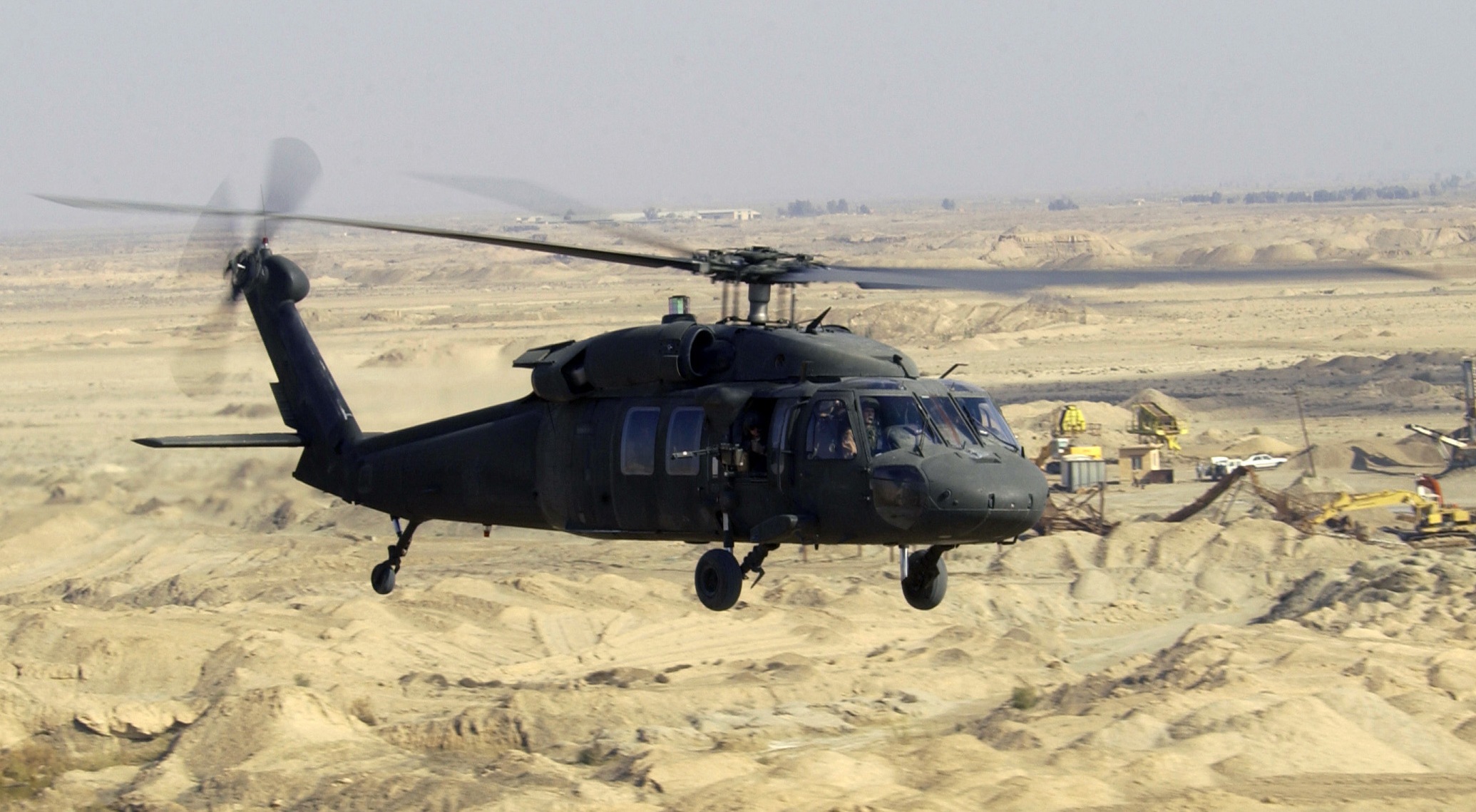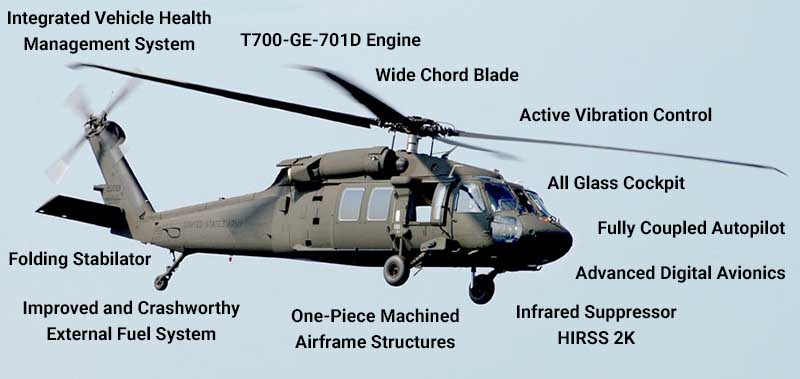UH-60: Technologies in Modern Helicopter Layout
The UH-60 helicopter stands as a standard in modern-day air travel, showcasing considerable advancements in design and technology that cater to the evolving demands of army operations. As we explore the advancement and crucial advancements of the UH-60, it ends up being vital to think about exactly how these advancements influence not just current applications however also the future landscape of helicopter layout.

Advancement of the UH-60
The development of the UH-60 Black Hawk helicopter represents a significant landmark in aerospace engineering and armed forces aviation. Introduced in the late 1970s, the UH-60 was developed by Sikorsky Airplane to fulfill the USA Military's demand for a functional energy helicopter qualified of carrying out a selection of objectives. Its style highlighted longevity, maneuverability, and speed, setting new standards for functional efficiency.
The UH-60 features a distinctive four-blade rotor system, which enhances lift and security, allowing it to operate successfully in varied settings. Its airframe is constructed from sophisticated composite materials, adding to a reduction in weight while maintaining architectural stability. The helicopter's design likewise incorporates better aerodynamics, which boosts gas effectiveness and increases array.
Throughout the years, the Black Hawk has gone through numerous upgrades to boost its capabilities, consisting of enhanced engines, advanced flight control systems, and modular systems for easy upkeep and adaptability. The helicopter's ability to carry out missions varying from troop transportation to medical evacuation has actually strengthened its duty as a backbone of U.S. armed forces operations. The UH-60 Black Hawk continues to be a prime example of just how innovation in helicopter layout can substantially influence military efficiency and functional flexibility.
Advanced Avionics Equipments
Advancements in avionics systems have actually changed the capabilities of contemporary helicopters like the UH-60 Black Hawk, improving operational efficiency and situational recognition (UH 60). The integration of advanced avionics enables boosted trip, interaction, and navigating monitoring, making the UH-60 extra flexible in diverse goal profiles
One of the crucial attributes is the sophisticated electronic cockpit, which uses multifunction display screens that provide real-time data, making certain pilots have prompt access to crucial trip info. This streamlining of information reduces pilot workload and improves decision-making processes during complex procedures. In addition, the consolidation of general practitioner and inertial navigation systems enables accurate positioning and route preparation, boosting mission implementation in challenging settings.
Moreover, progressed avionics systems enhance communication capabilities with protected information links and voice communication systems, permitting seamless coordination with ground forces and various other aircraft. The assimilation of automated trip control systems additionally contributes to improved security and control, particularly in damaging climate condition or throughout low-altitude maneuvers.
Engine and Efficiency Enhancements
Engine efficiency in modern-day helicopters has taken a substantial jump onward, driven by advancements that improve dependability, power, and performance. The UH-60 Black Hawk, for instance, uses the T700-GE-701C engine, which features a dual-channel, full-authority digital engine control great post to read system.
Additionally, the combination of engine health and wellness monitoring systems allows for real-time diagnostics and anticipating maintenance, substantially enhancing operational reliability. These systems not only alert teams to possible concerns prior to they become vital but additionally facilitate extra efficient maintenance organizing, consequently minimizing downtime.

Materials and Structural Innovations
Recent developments in materials and architectural layout have actually transformed modern helicopter building, enhancing both performance and durability. The introduction of sophisticated composite materials, such as carbon fiber strengthened polymers, has considerably lowered weight while maintaining architectural honesty. This change not only boosts fuel efficiency however also increases haul capability, allowing helicopters like the UH-60 to execute more varied missions.
Furthermore, advancements in light weight aluminum alloys and titanium components have actually contributed to improved resistance to rust and exhaustion, prolonging the lifespan of crucial airframe aspects. The strategic use these materials has brought about a decrease in maintenance demands and improved overall operational readiness.

In addition, the integration of computer-aided style (CAD) and additive production innovations has actually made it possible for more light-weight structures and complicated geometries, optimizing the aerodynamic performance of helicopter styles. These advancements facilitate fast prototyping and production, permitting makers to react swiftly to advancing mission requirements.
Safety And Security and Survivability Functions
Safety and survivability features in modern helicopter layout have actually become critical, showing the enhancing needs for goal effectiveness in challenging atmospheres. The UH-60 Black Hawk, a notable instance, incorporates sophisticated technologies to improve crew and passenger protection. Among one of the most crucial innovations is the incorporation of crashworthy fuel systems designed to reduce the threat of fire during influence. Additionally, the airframe is constructed with strengthened materials that dissipate and absorb power, further shielding owners look at here now in case of a crash.
The helicopter also employs a ballistic security system, that includes armored team seats and essential systems securing, lowering vulnerability to little arms you could try this out fire and shrapnel. Enhanced situational awareness is achieved through advanced avionics and sensing unit modern technologies, allowing pilots to discover and stay clear of risks successfully.
Moreover, the integration of redundancy in essential systems-- such as double engines and multiple flight control channels-- guarantees ongoing operation even if one system fails. The UH-60 is geared up with sophisticated emergency flotation gadgets, improving survivability in water touchdowns. Collectively, these functions not just improve the security of personnel but additionally enhance goal success rates in aggressive environments, showing the commitment to quality in helicopter design.
Final Thought
The UH-60 helicopter represents a considerable advancement in modern air travel innovation, including ingenious products, cutting-edge avionics, and robust safety and security attributes. Its advancement shows a dedication to enhancing performance and operational effectiveness while making certain pilot and crew survivability. The integration of lightweight composites and advanced navigating systems highlights the helicopter's flexibility in various military missions. Generally, the UH-60 works as a benchmark for future growths in helicopter style, symbolizing resilience and convenience in contemporary armed forces operations.
The UH-60 helicopter stands as a standard in modern air travel, showcasing considerable innovations in layout and technology that provide to the evolving needs of army procedures. As we discover the development and essential advancements of the UH-60, it comes to be necessary to take into consideration exactly how these advancements influence not only current applications yet likewise the future landscape of helicopter style.
Introduced in the late 1970s, the UH-60 was developed by Sikorsky Airplane to fulfill the United States Military's need for a flexible utility helicopter qualified of executing a selection of objectives. The UH-60 Black Hawk stays a prime example of just how development in helicopter style can dramatically impact armed forces effectiveness and functional versatility.
Generally, the UH-60 offers as a benchmark for future advancements in helicopter layout, embodying durability and convenience in contemporary army procedures.